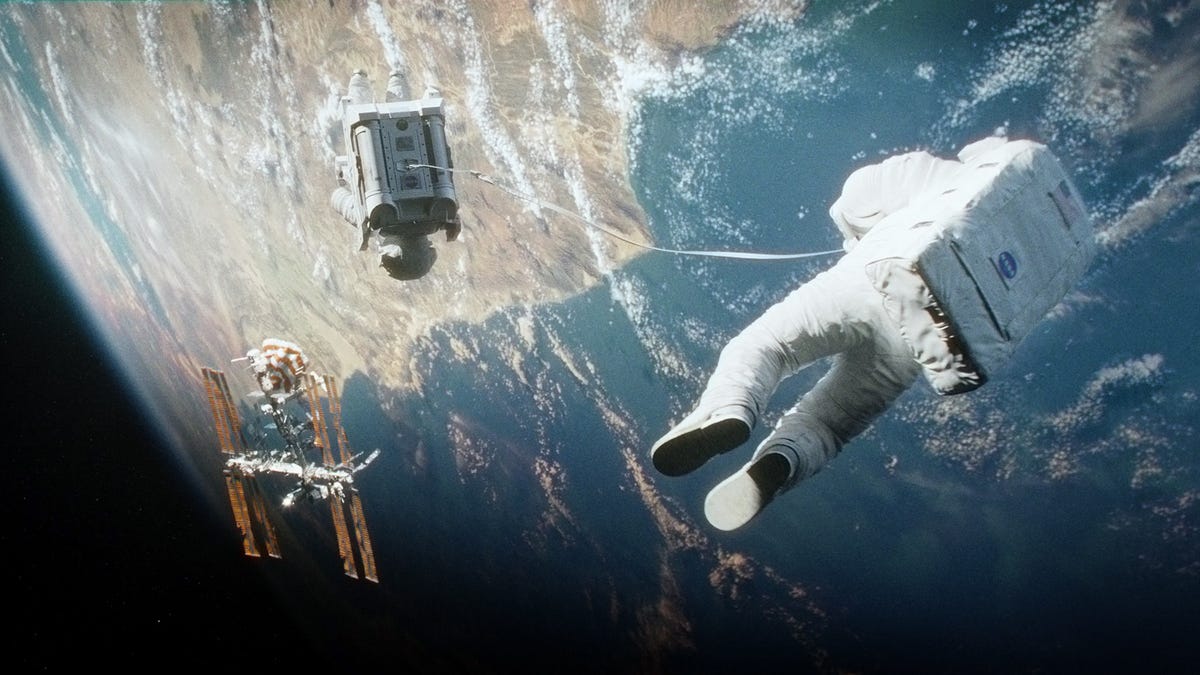NASA vet weighs in on 'Gravity': 'Spectacular realism'
Mark Uhran, a 28-year NASA veteran with the International Space Station, outlines his thoughts on "Gravity," the terrifyingly realistic new film about free drifting in space starring Sandra Bullock and George Clooney.

There's a moment, 30 seconds into the original trailer for Alfonso Cuarón's movie "Gravity," when the light piano music sharply drops off and you watch in a mixture of awe and utter terror as Sandra Bullock's character is sent head over heels, away from the image of Earth, strapped to a disintegrating arm of metal and flying toward the blackness of space.
"My first reaction was that the cinematography was of spectacular realism," said Mark Uhran, who retired last year from NASA as a director in the International Space Station (ISS) division with 28 years of experience. "I've never seen that done before."
Uhran, who saw an advance screening of the film earlier this week, joins a growing crowd of space-savvy professionals who have risen up to give "Gravity" a collective helping of praise alongside film critics' rave reviews. Cuarón, who directed "Children of Men" and "Y Tu Mamá También," may not have gotten everything right when it comes to some of the technical aspects of floating and traveling in Earth's orbit, but many agree: the cinematography is not only breathtaking and mind-blowing, it's also the most realistic space film to date.
"I saw a great deal of high-res imagery taken of the ISS during its construction and operation. I've never seen a Hollywood filmmaker actually be able to capture that clarity and resolution of the space station and shuttle," Uhran added.
To help capture that realism, Cuarón, who also co-wrote the script, turned to his longtime cinematographer, Emmanuel Lubezki. The film, which opens Friday nationwide, stars Sandra Bullock and George Clooney as astronauts caught in a tragic, life-threatening situation during what should be routine extravehicular activity, or EVA as it's referred to by NASA, outside their space shuttle.
So while a disaster on the scale of the movie's plot has never happened though theoretically could, the film is still not without its minor factual faults. Beware, minor spoilers ahead.
"Based on our experience base, there have never been two objects located in the same orbit," Uhran says of recognizing the impossibility of the astronauts' journey in "Gravity" to reach a distant space station from their destroyed shuttle.
That was the very issue the New York Times' Dennis Overbye, who saw the film with astronaut Michael J. Massimino, had with the film, noting that a lack of co-orbiting stations formed the basis for a fierce debate in the space policy field when it was initially deemed too dangerous to service the Hubble Space Telescope nearly a decade ago.
"In the original ISS program back in the 1980s there were plans for a co-orbiting platform, but those have never been funded. But it is technically possible that at some point in the future there could be co-orbiting platforms," Uhran said.
"It would take a team of NASA engineering analysts working for a year to put together a film that had perfect technical precision," he adds. "But that's just not called for in moviemaking, and I wouldn't expect it to be."
Perhaps the most true and compelling aspects of the film came from its depiction of the human element of being in space and struggling to get home safely. It's that emotional aesthetic employed in "Gravity" that Uhran thinks was spot on.
"What left a bigger impression on me was the way the film captured the emotional and psychological situation of an astronaut or two astronauts in free drift in space," Uhran said. "The utter vastness of space, the feeling of loneliness and hopelessness, the rise and fall of human emotion as the human spirit doesn't give in...it's an extremely inspirational film."
That's precisely why Uhran doesn't think the idea of "Gravity" being a psychological thriller with hints of horror-movie anxiety will negatively affect the aspirations of future would-be astronauts. "I don't think people will ever be demotivated to become astronauts. It's such an inspiring activity and career to pursue," he said.
"People recognize the challenges, and the people that become astronauts and take on these challenges are incredible intelligent and courageous," he added. "That's something that people look up to."

